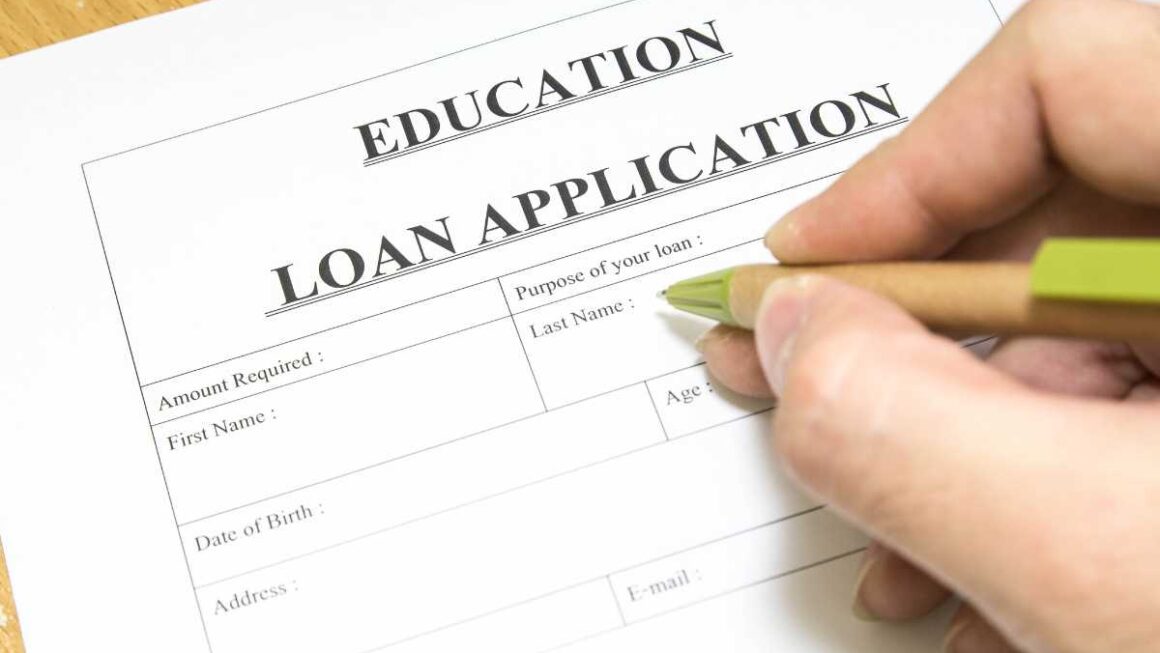Education is the foundation of a bright future, and in today’s competitive world, higher education has become a necessity for many. However, the rising cost of education often makes it difficult for students and their families to afford quality education without financial assistance. This is where education loans come into play, providing students with the necessary funds to pursue their academic goals without immediate financial strain.
Completing an education loan application can seem like a daunting task, especially for first-time applicants. Understanding the process thoroughly can make the application smoother and increase the chances of loan approval. In this article, we will guide you through the key steps to complete an education loan application successfully, along with important tips, FAQs, and a comprehensive conclusion.
Key Takeaways
- Research thoroughly to find the best loan product suited to your needs.
- Ensure you meet eligibility criteria before applying.
- Prepare all required documents carefully and accurately.
- Fill out the loan application form with complete and correct information.
- Be patient during the verification and approval process.
- Understand and agree to all terms and conditions before signing.
- Plan your repayment schedule in advance to avoid defaults.
- Keep communication open with your lender in case of repayment difficulties.
What is an Education Loan?

An education loan is a specialized financial product designed to help students pay for their academic pursuits. Whether studying in India or abroad, higher education often comes with high costs—tuition fees, accommodation, books, travel, and other related expenses. An education loan bridges the gap between the cost of education and a student’s current financial ability.
Definition
An education loan is a sum of money borrowed from a financial institution to pay for academic expenses, which the borrower repays over time, typically starting after completing the course.
Why Is an Education Loan Important?
In today’s world, a quality education can be expensive. Many families may not have the financial resources to support large upfront payments for college or university. Education loans make it possible for students from all financial backgrounds to access the best institutions and programs.
Benefits of an Education Loan:
Makes higher education accessible regardless of economic background.
Allows delayed repayment (moratorium period) until after graduation.
Helps build a strong credit history when repaid on time.
Can be tax-deductible under Section 80E of the Income Tax Act (India).
Many banks offer lower interest rates for female students or top-ranked institutions.
Who Can Apply for an Education Loan?
Generally, students are the primary applicants for education loans, but a parent, guardian, or spouse must act as a co-applicant or guarantor.
Eligibility Criteria Usually Include:
Admission to a recognized institution (India or abroad).
Good academic track record.
A co-applicant with a steady income (especially for unsecured loans).
Sometimes, collateral for higher loan amounts.
Types of Education Loans
There are several types of education loans depending on the course and location of study:
1. Domestic Education Loan
For courses pursued within the country.
Lower loan amounts and simple procedures.
2. Overseas Education Loan
For international studies.
Higher loan amounts with additional coverage like travel, visa, insurance.
3. Undergraduate Loan
For bachelor’s degrees or diploma courses.
4. Postgraduate Loan
For master’s degrees like MBA, MS, MTech, etc.
5. Career Development Loan
Offered for skill enhancement or certification programs (like CFA, CPA, etc.)
When and How is the Loan Repaid?
Moratorium Period:
The repayment doesn’t start immediately.
Most lenders give a grace period of course duration + 6 to 12 months.
Repayment Tenure:
Usually ranges between 5 to 15 years.
Interest may accrue during the moratorium period, depending on the lender.
EMI Options:
Fixed or floating rate EMI plans.
Flexible repayment structures for working students.
Real-Life Example
Ritika, a student from India, got admission to an MBA program at a top U.S. university. The total cost including tuition, living expenses, travel, and books came to ₹45 lakhs. Her parents opted for an overseas education loan from a bank, providing property as collateral. The bank sanctioned the loan in phases and began EMI after the course ended and she secured a job.
Government Schemes Supporting Education Loans (India)
Vidya Lakshmi Portal – One-stop platform for multiple education loan applications.
Central Sector Interest Subsidy Scheme (CSIS) – Offers interest subsidy for economically weaker sections during the moratorium period.
Dr. Ambedkar Central Sector Scheme – For OBC and EBC students studying abroad.Before diving into the application process, let’s understand what an education loan is. An education loan is a type of financial assistance provided by banks and financial institutions to students for covering education-related expenses such as tuition fees, books, accommodation, travel, and other related costs. These loans typically come with lower interest rates compared to other types of loans, and repayment starts after the completion of the education course or after a grace period.
Step 1: Research and Choose the Right Education Loan
The first and foremost step is to research different education loan options available in the market. Various banks and financial institutions offer different loan products with varying interest rates, repayment terms, eligibility criteria, and processing fees.
Tips:
- Compare interest rates (fixed vs floating).
- Check loan tenure and repayment options.
- Look for any hidden fees or prepayment penalties.
- Check for any government subsidies or schemes.
Choosing the right loan product based on your needs can save you money and hassle in the long run.
Step 2: Check Eligibility Criteria
Each lender has specific eligibility criteria that applicants must fulfill. These typically include:
- Age: Usually between 18 and 35 years.
- Academic record: Admission to a recognized institution.
- Course: Professional/technical courses, sometimes including courses abroad.
- Co-applicant: Most loans require a co-applicant, usually a parent or guardian.
- Credit score: A good credit score helps in approval.
Before applying, ensure you meet the lender’s eligibility requirements.
Step 3: Gather Required Documents

One of the most important steps is preparing all necessary documentation. Incomplete or incorrect documentation can delay or derail your application.
Common documents required include:
- Completed loan application form
- Admission proof (offer letter or admission letter)
- Academic records (mark sheets, certificates)
- Identity proof (Aadhar card, passport, voter ID)
- Address proof (utility bills, rental agreement)
- Income proof of co-applicant (salary slips, IT returns)
- Bank statements (last 6 months)
- Passport-sized photographs
- Fee structure of the course/institution
- Collateral documents (if applicable)
Ensure all documents are clear and up to date.
Step 4: Fill Out the Loan Application Form
After choosing the lender and gathering documents, fill out the loan application form carefully. This can usually be done online or offline.
Tips for filling the form:
- Provide accurate personal and academic information.
- Double-check contact details.
- Specify loan amount and tenure clearly.
- Attach all necessary documents as per the checklist.
- Keep copies of your filled form and submitted documents.
Errors in the application form may cause unnecessary delays.
Step 5: Submit the Application
Submit your completed application along with the required documents to the bank branch or upload them online if applying digitally. Some banks may require you to visit the branch for verification or biometric authentication.
Step 6: Application Processing and Verification
Once submitted, the bank initiates the verification process, which includes:
- Checking the applicant’s and co-applicant’s credit history.
- Verifying documents and academic credentials.
- Assessing the financial standing of the co-applicant.
- Conducting background checks and field verification, if necessary.
This process can take a few days to a few weeks depending on the lender and the completeness of the application.
Step 7: Loan Approval and Sanction

After successful verification, the lender approves the loan application. You will receive a sanction letter specifying the loan amount, interest rate, tenure, repayment schedule, and terms and conditions.
Step 8: Sign the Loan Agreement
Carefully read the loan agreement document, understand all terms and conditions, and sign the agreement. Keep a copy of the signed agreement for your records.
Step 9: Disbursement of Loan Amount
The loan amount is usually disbursed directly to the educational institution in installments or lump sum, depending on the institution’s fee payment schedule and the lender’s policies.
Step 10: Repayment Begins
Repayment typically starts after the completion of the course or after a grace period (usually 6 months to 1 year). Ensure timely repayment to maintain a good credit score and avoid penalties.
Also Read :-What Are the Common Pitfalls to Avoid When Taking an Education Loan?
Conclusion
Applying for an education loan may seem complex initially, but breaking the process down into manageable steps can simplify the journey. From researching loan options and checking eligibility to gathering documents, submitting your application, and finally managing repayment, each stage requires attention to detail.
Education loans open doors to higher education that might otherwise be financially out of reach, enabling students to invest in their future confidently. By following the steps outlined in this article, students and their families can approach the education loan application process with clarity and confidence.
Frequently Asked Questions (FAQs)
1. Can I apply for an education loan without a co-applicant?
Most banks require a co-applicant, usually a parent or guardian, to co-sign the loan for security. However, some lenders may offer loans without a co-applicant based on your creditworthiness.
2. What is the maximum loan amount I can get?
Loan amounts vary depending on the institution and course, but typically range from ₹10 lakhs to ₹1 crore, especially for studies abroad.
3. Are there any collateral requirements for education loans?
Loans up to a certain limit (usually ₹7.5 lakhs) are often given without collateral. Higher amounts may require collateral such as property or fixed deposits.
4. How long does it take to get education loan approval?
It generally takes between 7 to 15 working days but can vary depending on the lender and completeness of your documents.
5. What are the interest rates on education loans?
Interest rates range from 8% to 15% per annum depending on the lender, credit profile, and loan type (secured or unsecured).
6. Can education loan be availed for studies abroad?
Yes, most banks offer education loans for approved courses abroad, including tuition fees, living expenses, travel costs, and other related expenses.
7. What if I am unable to repay the loan on time?
In case of repayment difficulties, inform your lender early. Some lenders offer restructuring options or a moratorium period. Late payments can affect your credit score and attract penalties.



